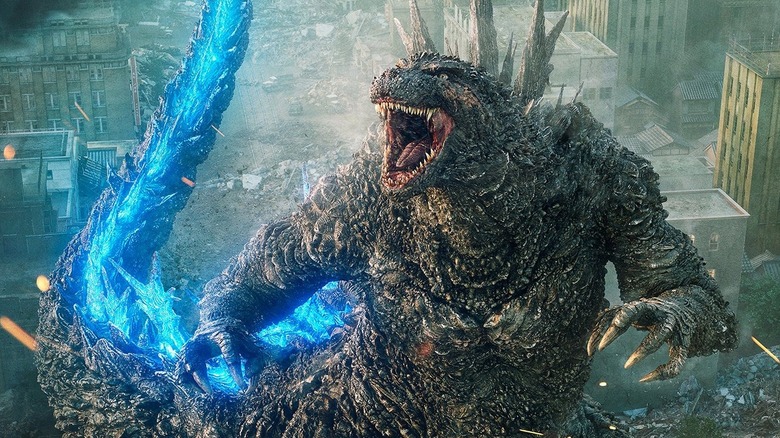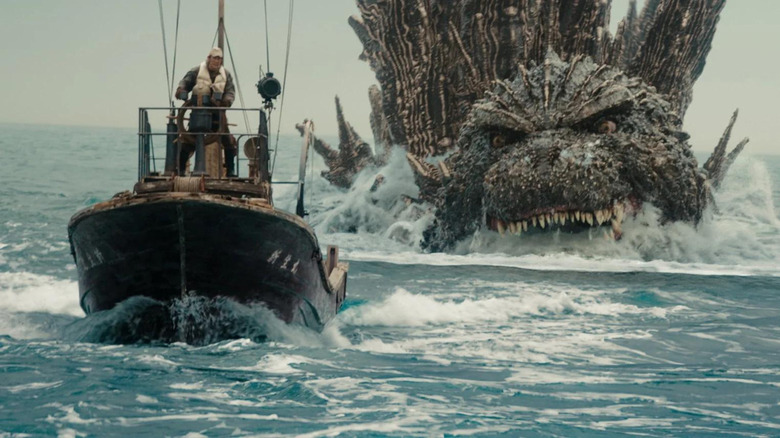Godzilla Minus One Gives A Terrifying Upgrade To The Atomic Breath
Godzilla has been destroying (and saving) Tokyo for almost 70 years. In that time, the king of monsters has gone through many changes. Sometimes Godzilla acts as a destroyer, sometimes as a hero. Each film adds new tiny details to the design and the look of the character.
"Shin Godzilla" added one of the biggest design changes by introducing several evolutionary changes to Godzilla — going from tadpole to monstrous behemoth. Now, "Godzilla Minus One" is continuing that tradition by adding an evolutionary change to its titular creature (initially, he looks like a giant T-rex), while adding its own little alteration. This time, Godzilla's iconic finishing move, the atomic breath, gets a massive upgrade.
In the film, whenever Godzilla is about to unleash his atomic breath (also known as heat ray depending on the translation), his dorsal spikes grow and extend right as he prepares his attack. Then they slam back in as the king of monsters fires. It's a cool visual that teases a more powerful and devastating attack. That's because, this time, Godzilla's atomic breath is an accurate and stark reminder of what a nuclear blast looks like.
A stark reminder
In an interview with /Film, "Godzilla Minus One" director Takashi Yamazaki confirmed he wanted Godzilla's new atomic breath to be "the most powerful of all Godzillas." What's more, he talked about bringing the giant monster back to his atomic roots.
"We see that Godzilla represented war and the effects of atomic weapons and things like that, and I also felt that I think it might be around time that the world needs to be reminded that Godzilla did represent those things at one point and, perhaps, we should remember that now in 2023."
That "Godzilla Minus One" is taking such a direct approach to its atomic era allegory — and getting released — right on the heels of "Oppenheimer" is a nice little bonus connection. Christopher Nolan's masterpiece is all about the incredible, awe-inspiring, absolutely terrifying power of nuclear explosions. Still, that film was criticized by some for not showing the aftermath of the bombing of Hiroshima and Nagasaki. "Godzilla Minus One" doesn't just make the monster's WWII allegory textual by setting the story immediately after WWII. It also makes the monster's most iconic weapon a reminder of the devastating power that obliterated two of Japan's cities just a few years prior. This makes Godzilla not just a force of nature, but divine punishment.

